
Fig.1- Map – Asia

Fig.2- Map – Europe
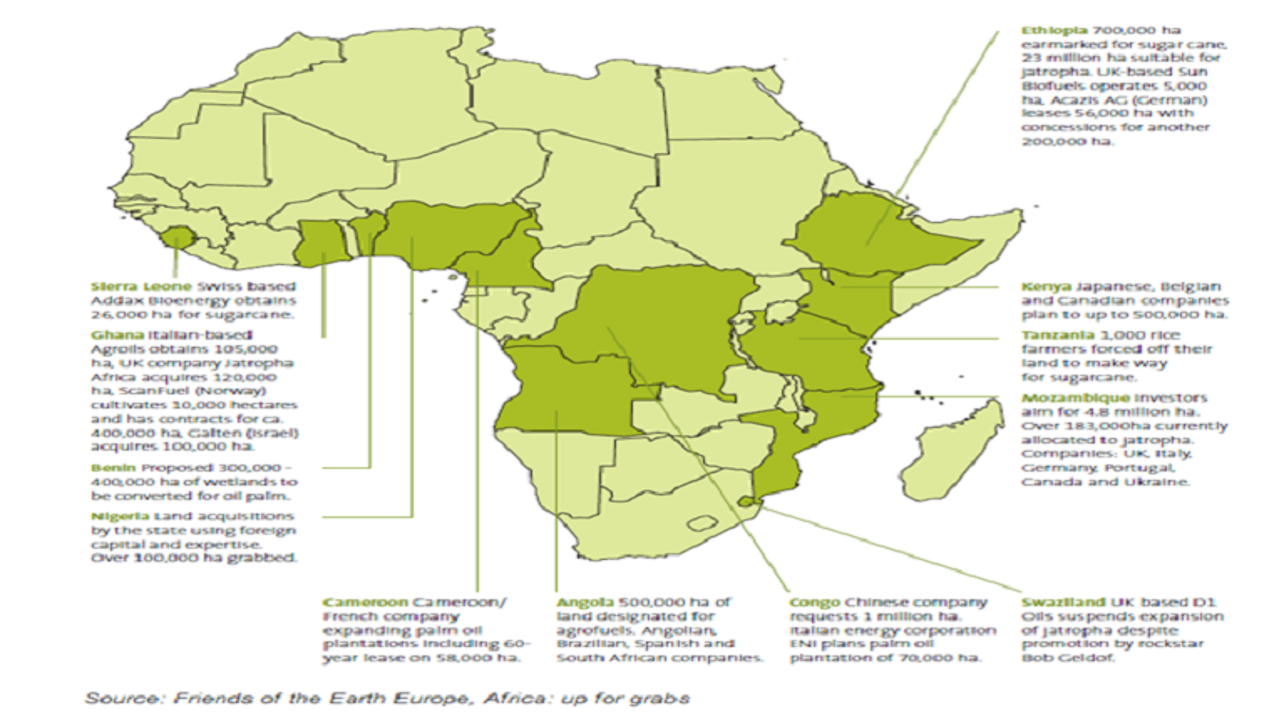
Fig.3- Map – Africa
Countries Majorly Focused
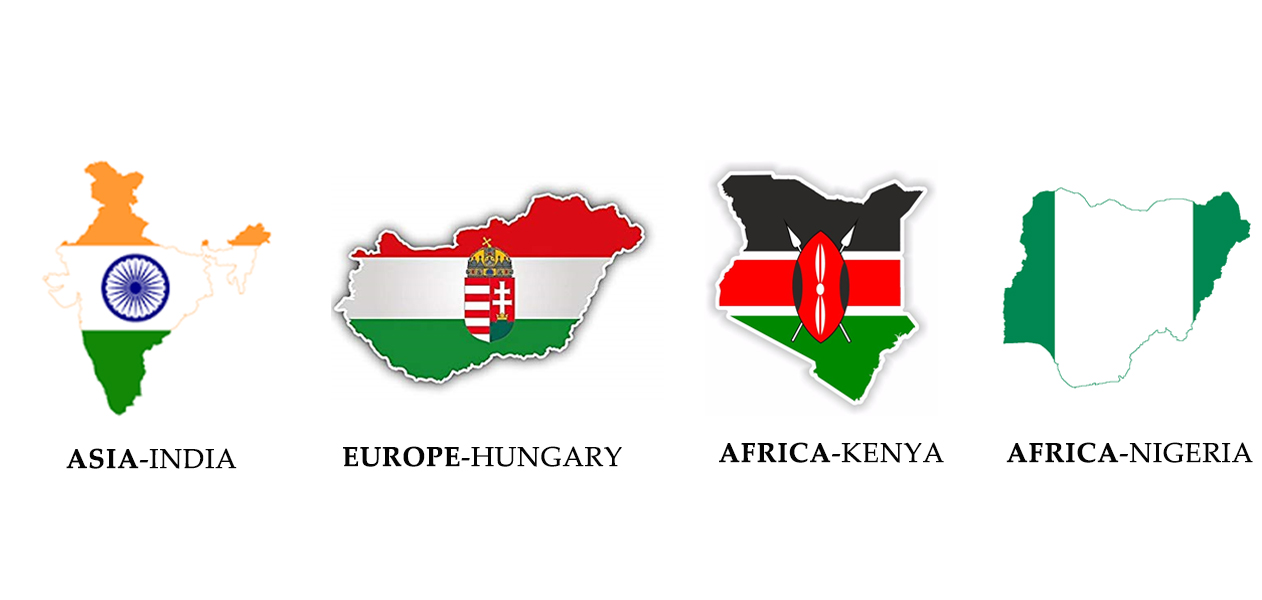
Fig.1
Agricultural land available
HUNGARY : Arable land area of 7.4 million hectares.
KENYA : Arable land area of 58 million hectares.
NIGERIA : Arable land area of 84 million hectares.
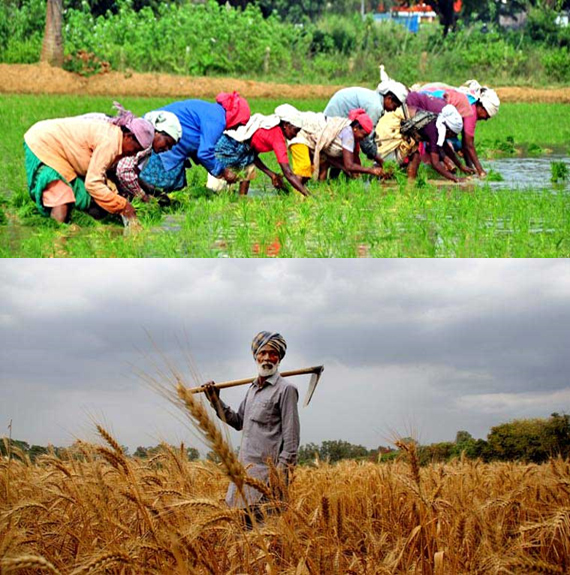
INDIA – Land of Multiple Opportunities
Today’s India is facing one of the problems which is unemployment of the youth.
Nowadays youth are taught in schools in such a way where they just make their focus to be engineer or doctor and get good opportunity in IT or service industry.
Very few try to become agronomist and make their career in agriculture. Because even after studying in agriculture students try to prefer getting government sector job to have secure life ahead.
Even if we see the most important need for any human being is Food shelter and clothing in which Food has the biggest importance as no human can live without food. Even clothing is prepared from cotton which is produced through agriculture so everything boils down at agriculture.
Nowadays every youngster give 1st importance to money and they feel money is only in IT or Service industry and so today there is no young generation willing to work in farm.
But today’s youth are tomorrows farmers generation. So youth should be taught the money multiples only in soil.
There is great opportunity in farming, farmers and youth should know the government policies which can help them grow with modern techniques and financial subsidies through government.
Every youth should be given entrepreneurship knowledge so that they can be interested in agriculture and process agriculture goods.

Fig.1 – Drought
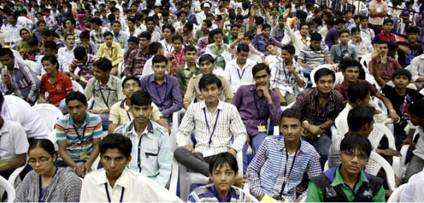
Fig.2 – Youth
Engaging youth in agriculture has become important topic in recent times as India moves towards food secure future.
Large economy is based on agriculture and gap between youth in agriculture has increased since post independence so bridging this gap is important.
85% of youth living in developing countries if works in primary sector can bring largest chunk of their Gross Domestic Product.
Low productivity in agriculture is leading to unemployed, underemployed youth in rural population.
There are proven technological available that claims to increase productivity by 30-40% but due to lagging government extension services it fails to reach needy population. It is reached only till 6% of farmers.
There is no proper training and education given to the youth who could be next regeneration of farmers.
Green revolution has got good effects but also has demerits which are :
- Inter Crop Imbalances
- Regional Disparities
- Increase in Interpersonal Inequalities
- Unemployment
HUNGARY
Hungary lies in central Europe. If we see Hungary is the food bowl for whole Europe.
Hungary, Romania and Poland has good agricultural land and is blessed with good sunny climate which is needed for agriculture.
But Hungarian agriculture has become monopolised. Today if you see the major crop grown is only Sunflower, Maize and wheat.
Which is grown as contract farming for some company.
All the agriculture is done in central Europe but processing is done in western countries and than again sold in this countries so all the economy is good in western country
So the youth is much attracted to western countries as they see good income source in western country than working in their own country as farmer.
But government should support farmer and students should be taught in school how farming should be done and processing can be done in their own country and sell the processed agri food in western country which will not only create good income but also create employment to every youth and grow the agriculture sector which is the main economy of the country.

Fig.1

Fig.2
Temporary shift to traditional values was encountered in 50’s which was initiated by communist governments.
Hungarian agriculture reform initiated in 1968 it was attracting and retaining youth in agriculture. It did not only empower youth and increase productivity but gave food security for the country.
Later it transformed into private large scale successor farmer this transformation from socialist to capitalist lead to sharp downsizing of industrial employment and coincided with a period of economic decline.
Enhancing rural employment is of imperative measure, as it will increase employment in the agriculture sector and will fill the productivity gap within the informal sector, thus resulting in rise in output.
KENYA-NIGERIA
If you see in world Africa has the highest population of the youth.
But maximum are unemployed or underemployed.
It is said that future of Africa can be so good that today even if they import food for their own country but tomorrow they can be the food bowl for the world.
Similarly like Asia and Europe African government should make good policies for agriculture.
Today also Africa is not so well developed they still follow primitive technology
If modern technology is brought into the country and youth is given proper knowledge of agriculture they can make great money and make their country an agricultural country.
Youth must understand the importance and get attracted to do farming.
Because migration of people from rural to urban is not only creating a low food production to agriculture but is also creating unemployment.

Fig.1

Fig.2
KENYA
About 78% of youths in Kenya are underemployed or unemployed but now there is substantial growth in service and industrial sector.
This productivity gap can be attributed to the lack of government initiative when it comes to food security, inflammation and innovation.
It was found through studies that the youthful farmers are still using primitive agriculture practices without improved technology, seeds and irrigation method.
Challenges still remain basically bridging the gap between economic growth and jobs creation and in turn addressing the growing unemployment, especially among the youth.
Youngsters often engage in part time work even for a few hours just to make ends meet. This creates an exodus of labor into the industrial sector, thus draining out the man power required to strengthen the agricultural sector.
It is recommended that a robust relationship between agencies interested in encouraging youth involvement in agriculture should be evolved through legislation and implementation of policies to guarantee training programs, credit facilities and land accessibility to youths at the identified rural youth organizations.
NIGERIA
There is a massive section of the population in Nigeria that is living below poverty line i.e. US $350 per annum, and a majority of these reside in rural areas, which constitute around 80 percent of the entire population. More than half of the rural population consists of able youths, which are currently unemployed.
Nigeria has an immense amount of arable land for cultivation, with over 84 million hectares of arable land, of which only 40 per cent is cultivated; a population of over 167 million, making it Africa’s largest market; and 230 billion cubic meters of water, making it one of the richest sources for agricultural growth in the world.
Nigeria’s food imports are rising at an unsustainable rate of 11% per annum, while dependence on the import of expensive food in the international markets fuels domestic inflation, and Nigeria is importing what it can produce in abundance.
With the right policies and quick implementation, the country will witness a surge in local production and reopening of small scale manufacturing centers, greater emphasis on food processing and industrial farming.
The development of agriculture and agro-based industries depends largely on the youth and adult farmers’ use of improved technology and methods, developed from agricultural research.
To integrate the youth population into the society, the problem in Nigeria that needs to be worked on is the process of rural modernization, leading its transition from traditional isolation, to integration into the national economy.
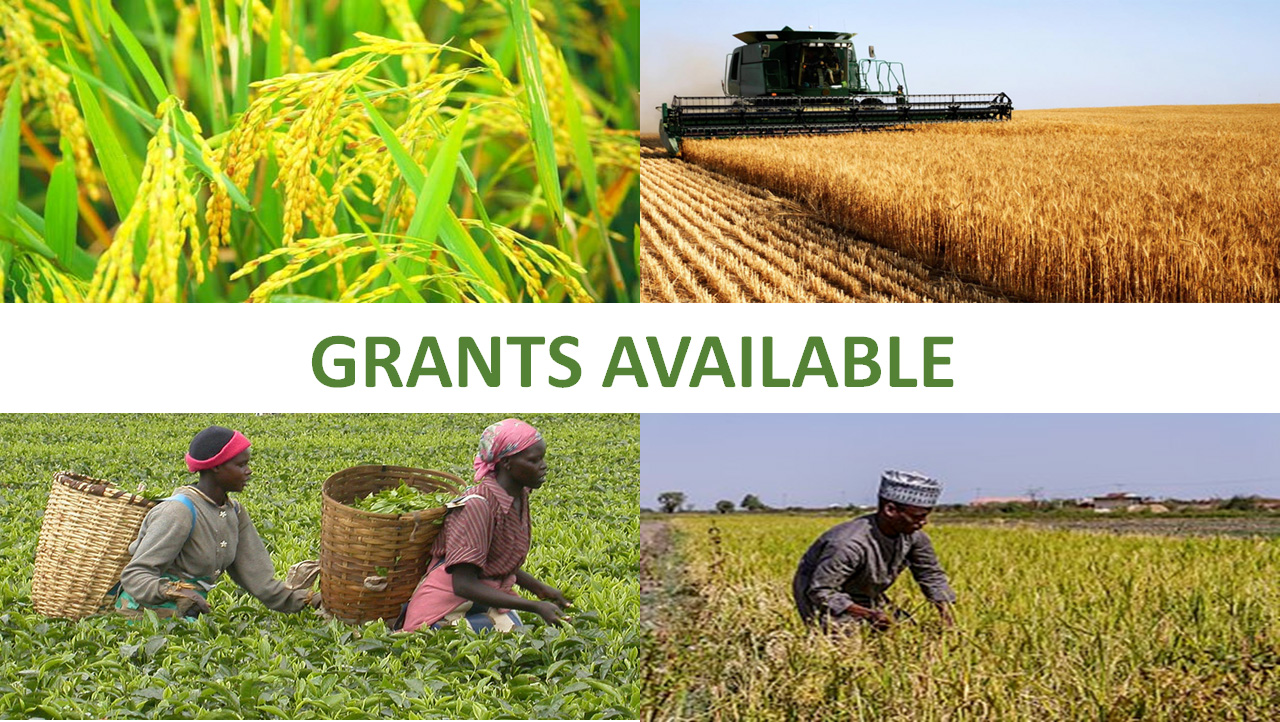
Fig.1
MS Swaminathan Research Foundation
The MSSRF is a nonprofit organization that aims to accelerate use of modern science for agricultural and rural development to improve lives and livelihoods of the tribal and rural communities, especially the marginalized sector of the population, the women and the poor.
The MSSRF has been actively engaged in the Retention of Youth in Agriculture through the ARYA (Attraction and Retention of Youth in Agriculture) project.
Scientists at the MSSRF have been hard at work at the ARYA program, mobilizing around 30,000 youths to move from cushy jobs, to taking up farming as a career.
Scientists at the MSSRF have been hard at work at the ARYA program, mobilizing around 30,000 youths to move from cushy jobs, to taking up farming as a career.
We also arrange field visits and give hands-on training. The farmers are encouraged to practice organic and inorganic farming depending on the soil conditions.
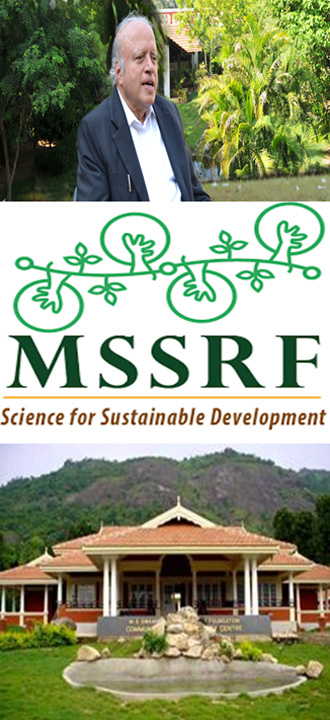
Fig.1
The research grant would really help in amassing an even greater farmer population into the project, and would give an impetus to better content as well as more skilled personnel associated with the project.
University of Debrecen
The University of Debrecen contributes to the development of the economy and the society by creating and disseminating new knowledge through education and research.
The University of Debrecen has extensive research facilities, especially in the department of Agriculture and Food Sciences.
The Faculty of Agriculture and Food Sciences is engaged with various domestic and international research organizations, and is conducting research on different projects that would help in rural and environmental development, as well as the development of multi-functional agriculture.
The Institutes for Agricultural Research and Educational Farm are a unit of the University of Debrecen specialized for the agricultural research and education.
It’s aim is the development of the food industry of the three counties belonging to the North Great Plain Region by using university resources in cooperation with the economic, governmental, local governmental and non-profit participants of the society.

Fig.1
IAREF has three organizational units: The Debrecen Educational Farm and Regional Research Institute, the Research Institute of Karcag and the Research Institute of Nyíregyháza.
Currently, their main purpose is the same: to provide sustainable social development with system-oriented research.
With this research grant, the University can utilize the research centers to provide R&D backing to the project, along with content creation and data collection and analysis.
E-Health Africa
eHealth Africa (eHA) was founded in 2009 by Evelyn Castle and Adam Thompson to provide support to Northern Nigeria’s health infrastructure.
E-Health Africa’s mission is to provide data driven solutions to better the public health and livelihoods of rural communities and tribal communities in Africa. They connect and deliver better public health services for vulnerable communities.
eHealth Africa uses high technology driven solutions to target the vulnerable and marginalized communities which have been plagued by poverty and disease.
Outreach and delivering niche solutions, is what this organization specializes in, due to its large network and the technological applications and the ability to reach affected areas and troubleshoot.
With this grant, this ability could be widely utilized by this organization, as they have the home ground advantage, as well as the technological capability to support the objectives of the project.
Proposed Development & Objectives
The project development objective is to increase the employability of vulnerable rural youth, both girls and boys, in agriculture and allied rural sectors by enhancing their access to knowledge and professional guidance and training through the creation of interactive, participatory rural youth clubs.
The approach to enhancing youth employ-ability proposed in this project is to mobilize vulnerable rural youth into clubs and offer them with job specific skills, including technical, agricultural skills and knowledge as well as entrepreneurial and business skills in the first year.
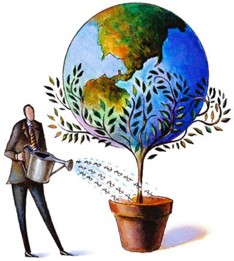
Fig.1
In the second and third years, they will be exposed to variety of rural livelihood options and connected to existing agri-businesses for specialized training and to explore entrepreneurial opportunities.
This will enable the youth to eventually access income generation opportunities, improve agriculture productivity and enhance the agribusiness sector.
The project introduces several innovations. Vulnerable rural youth will be organized into clubs to benefit from peer support and opportunities to hone leadership skills.
Youth will be connected to local agribusiness to build skills along the market value chain, to increase employment, and also encourage and support entrepreneurial opportunities.
The club model and the focus on leadership development and hands-on training will create future leaders of Indian agriculture.
Some Solutions & Key Eexpected
INDIA
Increase the employ-ability of about 600 senior rural youth, which includes 180 girls, participating in the pilot project: Employ-ability will be measured by number of days of active employment, either as entrepreneurs or as employees/interns/apprentices at agribusinesses.
Increase in the knowledge, skills, and desirable traits for future employment of 2000 junior rural youth, which includes 600 girls, as a direct result of the project: Specific tests to determine level of agricultural skills, knowledge of financial management, entrepreneurial ability, and interpersonal skills will be administered.
5% of senior youth have demonstrable leadership qualities and are capable of taking over the position of club leader/mentor: Youth with leadership qualities will be identified and nurtured to take up mentorship positions.

Fig.1
160 rural youth clubs have established links to local educational, extension, training institutions for operational sustainability: Connections may include district or block-level extension systems, farmer science centers (KVKs), or agricultural schools.
160 rural youth clubs established linked to commercial banks, local value chains, and private sector companies for financial sustainability, sponsorship and mentorship: This will be measured by the number of sponsorship agreements that the clubs will be able to generate with the local entities by demonstrating their effectiveness in reaching out to rural youth and connecting them with local business opportunities.
Some Solutions & Key Eexpected
HUNGARY
Increase the employability of about 150 senior rural youth, which includes 45 girls, participating in the pilot project: Employability will be measured by number of days of active employment, either as entrepreneurs or as employees/interns/apprentices at agribusinesses.
Increase in the knowledge, skills, and desirable traits for future employment of 500 junior rural youth, which includes 150 girls, as a direct result of the project: Specific tests to determine level of agricultural skills, knowledge of financial management, entrepreneurial ability, and interpersonal skills will be administered.
Around 30% of senior youth have demonstrable leadership qualities and are capable of taking over the position of club leader/mentor: Youth with leadership qualities will be identified and nurtured to take up mentorship positions.
Keeping in line with the existing NHRDP (New Hungary Rural Development Program), training regarding development patterns in accordance to specificities of regional production areas, promoting sustainable farming systems and architecting a new, alternate rural environment, which generates more than adequate output as well as livelihoods for rural communities.
Special emphasis will be given to diversification into non-agricultural activities and building viable value chains. The primary purpose is to create and maintain jobs within the agricultural sector, in agro-related industries and encouraging product building, marketing as well as service marketing in the agricultural sector.

Fig.1
Some Solutions & Key Eexpected
KENYA
Increase the employability of about 250 senior rural youth, which includes 70 girls, participating in the pilot project: Employability will be measured by number of days of active employment, either as entrepreneurs or as employees/interns/apprentices at agribusinesses.
Increase in the knowledge, skills, and desirable traits for future employment of 1000 junior rural youth, which includes 300 girls, as a direct result of the project: Specific tests to determine level of agricultural skills, knowledge of financial management, entrepreneurial ability, and interpersonal skills will be administered.

Fig.1
5% of senior youth have demonstrable leadership qualities and are capable of taking over the position of club leader/mentor: Youth with leadership qualities will be identified and nurtured to take up mentorship positions.
Effective harmonization of the research institutions, government framework as well as agro related industries, updating and implementation of seed regulations and financial services provided to farmers will be propagated through the program.
Micro financing, action plan of policy, legal and taxation measures to promote agricultural marketing and value addition will be a course of imperative measure.
Some Solutions & Key Eexpected
NIGERIA
Increase the employ-ability of about 300 senior rural youth, which includes 75 girls, participating in the pilot project: Employ-ability will be measured by number of days of active employment, either as entrepreneurs or as employees/interns/apprentices at agribusinesses.
Increase in the knowledge, skills, and desirable traits for future employment of 1200 junior rural youth, which includes 400 girls, as a direct result of the project: Specific tests to determine level of agricultural skills, knowledge of financial management, entrepreneurial ability, and interpersonal skills will be administered.
5% of senior youth have demonstrable leadership qualities and are capable of taking over the position of club leader/mentor: Youth with leadership qualities will be identified and nurtured to take up mentorship positions.

Fig.1
Strengthening the agricultural ecosystem to utilize the scarce resources at hand and sufficing the food needs of the population is of imperative measure. In lieu with the Agriculture Promotion policy, resources to tackle the food gap as well as generating enough foreign exchange from agriculture to boost the economy, will be tackled strategically.
Levels of engagement of market place participants, farmers, states, investors, financial institutions, and communities will be enhanced and the necessary gaps will be bridged. The performance of all of these processes and flows will be tracked periodically to make sure that the fundamental goal of food security and sustainability is achieved over the lifeline of this project.
4-H FOCUS
The 4-H movement was established in Hungary in 1990-91, with the support of the School Development Foundation and AGRYA (Agricultural and Rural Youth Association).
Dr. Juhasz has been able to start Hungarian 4-H clubs located mainly in the schools and taught by volunteer teachers in after-school settings.

Fig. 4H
Considering there has been no formal national funding, they have been very successful at securing volunteers in starting the overall program.
Objectives
Provide opportunities to gain knowledge and technical skills used to complete specific tasks.
Train youth to become complex thinkers, improve their decision making abilities, become responsible, encourage an enterprising spirit and provide an opportunity for them to earn some money.
Facilitate adaptation to society and increase their tolerance towards individuals from various strata of society.
Effect change for the development of the country, especially regarding job creation.
Provide opportunities for the youth to get acquainted with other countries/cultures through international connections.
Focus of the African Development Bank
The AfDB’s role in attracting more investment for youth in agribusiness has been substantial so far, with them partnering up with NIRSAL (Nigeria Incentive-Based Risk Sharing System for Agricultural Lending), a $300 million partnership, that aims to create a successor farmer generation to replace the older one, which will bridge the manpower gap that is the major problem in Africa currently.
The AfDB is also taking extensive efforts in bringing these “Agripreneurs” to the spotlight and rewarding them for the much needed work they’re doing right now, of various contemporary ventures undertaken by them.
The Bank is trying to raise a generation of youths into agriculture that is technology driven and makes economic sense.
AfDB can help by turning the comparative advantage that the marginalized farmers have, into a competitive advantage, by getting involved with this Multi-Nation, Multi-Stakeholder project, and ensure that with rational economic policy-making and technologically driven solutions, we can have a farmer-force ready to face the challenges regarding demographic and various types of unemployment that the African continent, and the world at large, is plagued with.
Conclusion
The main objective is building such a framework, that will make agriculture a profitable and sustainable business, which also strengthens the rural economy and benefits local farmers, by engaging the maximum chunk of the young population in rural areas, instead of losing them to the influx that puts a pressure of urban resources.
If this rural economy thrives in tandem with the urban, then the overall economic development of the nation will be inevitable.

